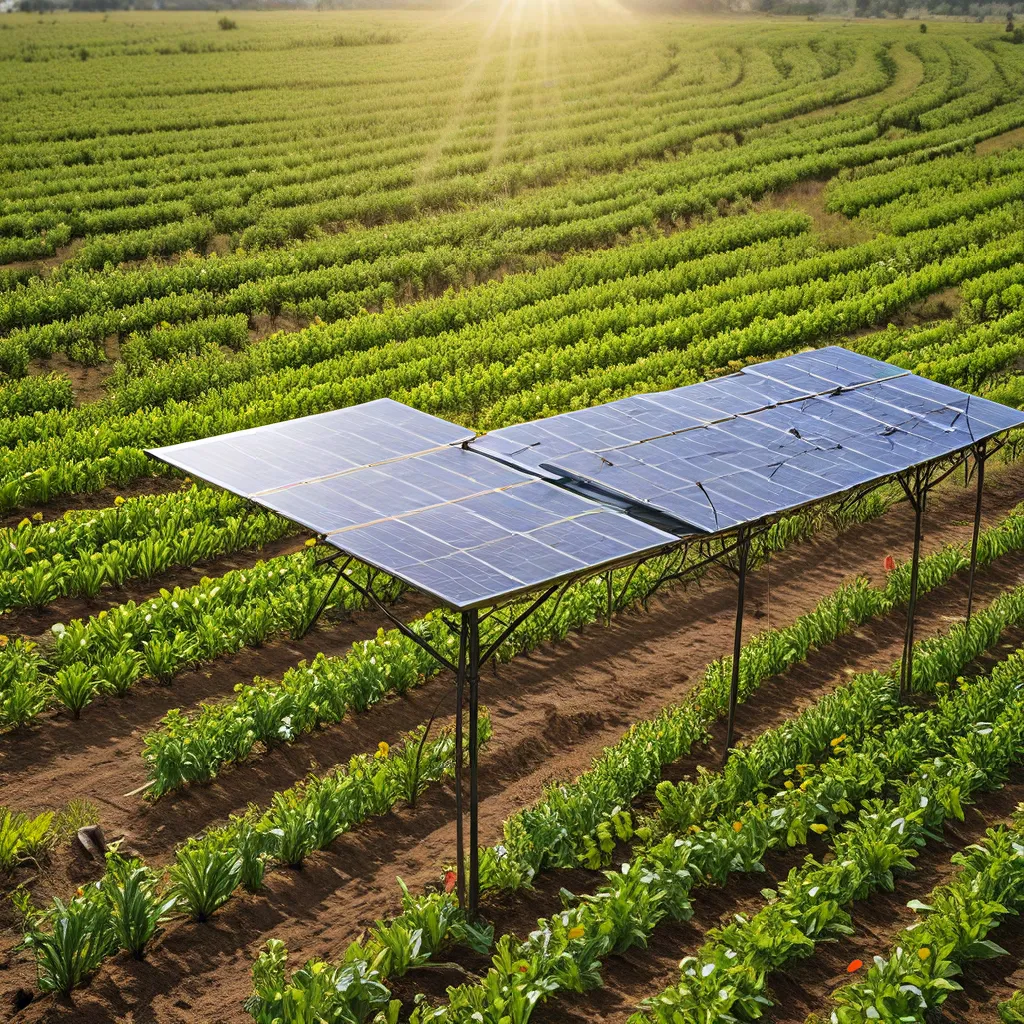
As an energy enthusiast, I’ve always been fascinated by the intersection of renewable technologies and sustainable agriculture. So, when I stumbled upon the concept of solar-powered irrigation systems, I knew I had to dive in and explore this “bright idea” further. Join me on a journey where we’ll uncover the innovative ways farmers are harnessing the power of the sun to revolutionize their water management practices and cultivate a greener, more resilient future.
The Thirsty Challenge of Conventional Irrigation
Water scarcity is a pressing global issue, and the agricultural sector is a major player in this ongoing challenge. Conventional irrigation methods, such as flood or sprinkler systems, can be incredibly water-intensive, often leading to significant waste and unsustainable practices. Studies have shown that these traditional irrigation systems can have water efficiency rates as low as 30-40%, meaning that a staggering 60-70% of the water used never actually reaches the crops.
The implications of this water-guzzling approach are far-reaching. Farmers struggle to maintain adequate water supplies, leading to decreased crop yields and financial strain. Additionally, the reliance on grid-powered or diesel-fueled irrigation pumps contributes to the overall carbon footprint of agricultural operations, further exacerbating the environmental impact.
The Bright Idea: Solar-Powered Irrigation
Enter the game-changing solution: solar-powered irrigation systems. These innovative technologies harness the power of the sun to provide a sustainable, efficient, and cost-effective alternative to traditional irrigation methods. By leveraging the abundant, renewable energy of the sun, farmers can reduce their dependence on fossil fuels and grid-supplied electricity, ultimately lowering their operating costs and environmental impact.
As the Energising Development (EnDev) program has highlighted, solar-powered irrigation systems have “immense potential for livelihood transformation among smallholder farmers.” These systems not only conserve water by utilizing highly efficient drip or micro-irrigation techniques but also provide a reliable, off-grid power source for the pumps, ensuring that farmers can maintain their operations even in remote or underserved areas.
The Science Behind Solar Irrigation
The core of a solar-powered irrigation system is the photovoltaic (PV) array, which converts sunlight into electrical energy. This electricity then powers a water pump, which extracts groundwater or surface water and distributes it through a carefully designed irrigation network. The beauty of this approach lies in its symbiotic relationship with the sun – the more sunlight, the more energy is generated, and the more water can be efficiently delivered to the crops.
One particularly innovative application of solar irrigation is the concept of “agrivoltaics,” where solar panels are strategically placed over crop fields to provide dual benefits. As the USDA Climate Hubs explain, this approach allows farmers to harness solar energy while simultaneously shielding their crops from direct sunlight, reducing water evaporation and potentially even enhancing plant growth.
Overcoming the Challenges
Of course, the transition to solar-powered irrigation is not without its challenges. Upfront costs can be a significant barrier, as the initial investment in solar panels, pumps, and irrigation infrastructure can be higher than traditional systems. However, as Plug ‘n’ Save Energy Products has demonstrated, the long-term savings in energy and water costs can often outweigh these initial expenses, making solar irrigation a wise investment for sustainable agriculture.
Another hurdle lies in the need for specialized knowledge and technical expertise. Designing and installing a solar-powered irrigation system requires a deep understanding of solar technology, irrigation engineering, and crop cultivation. Fortunately, as the demand for these systems grows, there is an increasing number of educational resources and training programs available to support farmers in navigating this new frontier.
Unlocking the Potential of Solar Irrigation
The benefits of solar-powered irrigation systems extend far beyond the individual farm. By reducing water consumption and transitioning to renewable energy sources, these innovative technologies contribute to broader environmental and societal goals. Research has shown that widespread adoption of solar irrigation can lead to significant reductions in greenhouse gas emissions, helping to mitigate the impact of climate change.
Moreover, these systems have the potential to transform the lives of smallholder farmers, particularly in developing regions. By providing reliable, affordable, and sustainable water access, solar-powered irrigation can boost crop yields, improve food security, and enhance the overall economic well-being of rural communities.
The Future of Sustainable Agriculture
As we gaze into the future of sustainable agriculture, the bright lights of solar-powered irrigation systems shine brightly. These innovative technologies are poised to play a pivotal role in addressing the pressing challenges of water scarcity, climate change, and food security. By harnessing the power of the sun, farmers can cultivate a greener, more resilient tomorrow – one that benefits both the environment and the communities that rely on it.
So, what are you waiting for? Embrace the bright idea of solar-powered irrigation and join the movement towards a more sustainable, energy-efficient future in agriculture. The sun is shining, and the future is ours to shape.